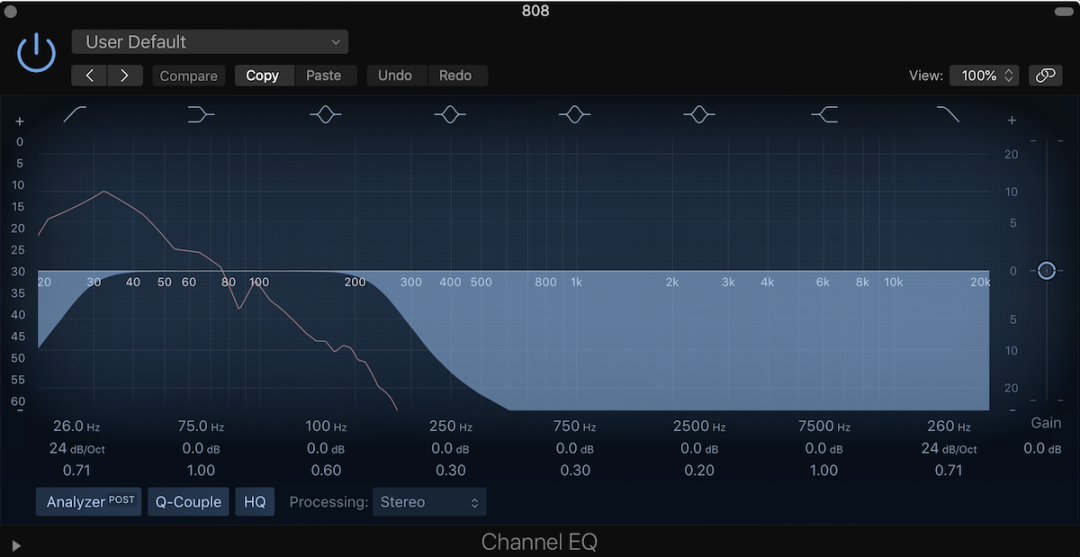Sub bass is the stuff that’s felt more than heard. It’s an important part of a mix because it contributes to so much of the power listeners feel.
In some genres sub bass a leading part of a mix, and in others it plays a supporting role. Knowing how to treat it in your mixes let’s you create speaker-rattling basslines, or complement other instruments with a full low-end.
What is sub bass?
Subs are the lowest of the low frequencies. They start around 60 Hz and extend all the way down to the bottom of human hearing, which is 20 Hz. Think about that feeling in your chest when you’re at a loud club or venue…that’s how we understand sub frequencies.
As it relates to instruments, the low E string on a bass guitar is about 41 Hz. The lowest note on a piano is A, at 27.5 Hz. Anything below 20 Hz falls into the infrasound category, which are frequencies below human hearing.
In the studio you’d need a subwoofer to hear sub bass, or a really good pair of headphones.
How to EQ Sub Bass
First off, it’s okay if you don’t have a woofer in your home studio. While it’s nice to know what’s happening in the very low-end, it isn’t 100% necessary. A decent pair of headphones usually has a frequency response low enough to hear some of the subs, so that’ll work. Most of the popular home studio monitors will get you around ~40 Hz as well.
Next, spectrum analyzers are very useful for visually telling us what’s happening in the sub bass region — particularly if we don’t have a subwoofer. FabFilter Pro Q is a well-known equalizer with a built-in spectrum analyzer, and the stock Logic EQ has one as well. Ableton also has their own analyzer under Audio Effects called Spectrum.
Pop a spectrum analyzer on your sub-heavy instruments to see what’s happening if you can’t hear it yourself.
Finally, a big part of how to mix sub bass is actually how to shape the sounds around it. Remember, it’s the power we feel in a mix, and not so much what we hear, so we need to create space for it to live.
High-Pass Filtering
We stress the usefulness of high-passing all the time. It’s the easiest way to make an instrument less muddy and open up room for the entire mix.
- Related: 8 Tips For Getting Better Low End
A huge part of what makes sub bass pop is carving out the space for it. That means removing (high-passing) unnecessary low-end on the other instruments in a mix, like vocals, guitars, keyboards/synths, even kick drum and bass guitar.
Mixing sub bass implies we have a dedicated instrument creating it, such as a bass synth or 808, so we need to remove those frequencies from our other non-sub instruments. That’s the first step: giving your subs a place to live in the mix.
Low-Pass Filtering
So the first step in mixing sub bass is using high-pass filters on the other instruments. We understand that by removing the sub frequencies from elements that don’t need them, we’re essentially leaving space for the actual sub instrument(s) to occupy.
Equally useful is the low-pass filter on sub instruments. Sometimes a gritty synth bass or 808 will have information that extends up into the midrange. This can be cool, but we also have lots of other elements in the production covering the mids. Low-passing sub bass instruments consolidates them to the space they’re intended to occupy.
Try this: the energy of your sub bass can hit somewhere in the 40 to 60 Hz range. Since that’s accounted for, high-pass the kick drum up to 60 Hz, and focus its energy an octave higher, around 120 Hz. This is the basic principle of mixing subs alongside other low-end elements in a production.
- Related: How to Use Filters in Your Mixes
- Related: 5 Piano EQ Tips to Improve Your Mix & Achieve Awesome Tone
Conclusion: How to Mix Sub Bass
Sub frequencies serve a specific purpose, and that’s to make listeners feel low-end in their body. It adds power and size to a mix, and the key is carving out a space for it to sit.
Experiment with the relationship between sub bass and the other low-end instruments like kick drum. Using sub for low-end energy and kick for punch is a great way to create a cohesive sound!
